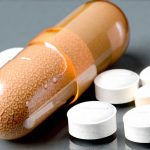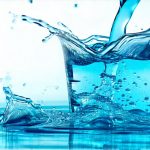Maintaining optimal hydration is fundamental to overall health, impacting everything from cognitive function to energy levels. However, for individuals experiencing bladder issues – whether due to conditions like overactive bladder (OAB), interstitial cystitis, or simply a sensitive bladder – the relationship with hydration becomes significantly more complex. It’s not merely about drinking enough water; it’s about strategically timing intake, choosing appropriate fluids, and understanding how individual habits can affect bladder control. Many people unintentionally exacerbate their symptoms through seemingly innocuous hydration practices, leading to urgency, frequency, and discomfort. This article explores nuanced hydration strategies designed not just for general wellbeing, but specifically geared towards supporting bladder health and minimizing unwanted symptoms. We’ll delve into the science behind these techniques and offer practical advice applicable to a wide range of situations.
The challenge lies in finding a balance between adequate fluid intake – necessary for bodily functions – and managing bladder sensitivity. Restriction isn’t typically the answer, as concentrated urine can actually irritate the bladder lining, worsening symptoms in the long run. Instead, the focus is on mindful hydration: becoming aware of your body’s signals, understanding what triggers urgency, and adopting habits that promote a healthier relationship with fluid consumption. This involves more than just increasing or decreasing water intake; it requires a thoughtful approach tailored to individual needs and circumstances. We will explore how to personalize these strategies for optimal bladder support. Consider exploring consistent hydration tracking to better understand your personal fluid patterns.
Understanding the Bladder-Hydration Connection
The bladder’s primary function is to store urine, and its capacity varies significantly between individuals. However, consistent overhydration or dehydration can both negatively impact its performance. Overhydration stretches the bladder beyond its comfortable limits, potentially leading to a feeling of urgency even with small amounts of fluid intake. Conversely, concentrated urine from insufficient hydration irritates the delicate bladder lining, causing inflammation and exacerbating symptoms like pain and frequency. The key is to maintain a consistent level of hydration that respects your bladder’s capacity and minimizes irritation.
Fluid choices play a crucial role as well. While water is generally considered the best option, certain beverages can significantly impact bladder health. Caffeine, alcohol, carbonated drinks, and acidic juices are known bladder irritants for many people, increasing urgency and frequency. These substances can cause the bladder muscles to contract more frequently, leading to discomfort and potentially accidents. Identifying personal triggers is essential, as sensitivities vary widely. Keeping a fluid diary – noting what you drink, when, and how it affects your symptoms – can be incredibly helpful in pinpointing problematic beverages. To further refine beverage choices, review healthy beverage alternatives that support bladder health.
Ultimately, effective hydration for bladder support isn’t about a one-size-fits-all approach. It’s about understanding your bladder’s unique needs and adapting your fluid intake accordingly. This requires self-awareness, experimentation, and potentially guidance from a healthcare professional to develop a personalized strategy.
Personalized Hydration Strategies
Developing a personalized hydration plan begins with assessing individual factors. Consider your activity level, climate, underlying health conditions, and – most importantly – what specifically triggers your bladder symptoms. A starting point is often around 6-8 glasses (approximately 1.5-2 liters) of fluid per day, but this should be adjusted based on your needs and tolerance. Don’t aim for a rigid number; instead, focus on drinking consistently throughout the day rather than gulping down large amounts at once.
Spreading out fluid intake is vital. Sipping water regularly – every 1-2 hours – avoids overloading the bladder. Avoid “loading” fluids before extended periods where access to restrooms might be limited (e.g., long car rides, meetings). Instead, drink steadily throughout those periods. Also, consider timing your fluid intake in relation to bedtime. Reducing fluid consumption a few hours before sleep can help minimize nighttime awakenings due to urgency. This doesn’t mean depriving yourself of water but rather strategically adjusting the timing. You might also find hydration strategies for active days helpful in managing fluid intake.
- Prioritize water as your primary beverage choice.
- Limit or avoid known bladder irritants like caffeine, alcohol, and acidic drinks.
- Experiment with herbal teas (non-caffeinated) that are generally considered calming to the bladder.
- Keep a fluid diary to identify personal triggers and adjust intake accordingly.
Identifying & Managing Bladder Irritants
Bladder irritants aren’t always obvious; they can vary significantly from person to person. Common culprits include caffeine, alcohol, carbonated beverages, citrus fruits and juices, tomatoes and tomato-based products, artificial sweeteners, spicy foods, and even chocolate. However, the key is individual sensitivity. What bothers one person might not affect another. A fluid diary helps pinpoint these triggers through careful observation of symptom patterns after consuming specific beverages or foods.
Managing irritants doesn’t necessarily mean complete elimination. For many, it’s about moderation. Reducing caffeine intake gradually rather than abruptly can minimize withdrawal symptoms and make the change more sustainable. Similarly, swapping acidic juices for water or herbal teas might be sufficient to alleviate symptoms without drastically altering dietary habits. Paying attention to ingredient lists is also important – hidden sources of irritants can often lurk in seemingly harmless products.
Be mindful of artificial sweeteners. Many are known bladder irritants and can cause significant discomfort. Consider alternatives like stevia (in moderation) or simply reducing overall sweetness.
Timing & Distribution of Fluid Intake
As mentioned earlier, spreading out fluid intake throughout the day is crucial for bladder support. Avoid large boluses of liquid at once, as this rapidly fills the bladder and increases urgency. Instead, opt for frequent sips – small amounts every 1-2 hours. This allows the bladder to gradually fill without becoming overly stressed. Think about it like pacing yourself during a run; consistent effort is far more effective than sprinting followed by exhaustion.
Timing fluid intake around activities is also important. Reduce consumption 2-3 hours before bedtime to minimize nighttime awakenings and improve sleep quality. Similarly, if you anticipate being in a situation where restroom access is limited, avoid excessive fluid intake beforehand. This isn’t about restricting fluids; it’s about proactively managing potential discomfort. To help manage your hydration throughout the day, explore optimizing daily habits.
- Establish a regular sipping schedule throughout the day.
- Reduce fluid intake before bedtime to minimize nighttime urgency.
- Be mindful of your activity levels and adjust intake accordingly.
The Role of Pelvic Floor Exercises & Professional Guidance
While hydration strategies are fundamental, they often work best when combined with other bladder support techniques. Pelvic floor exercises (Kegels) strengthen the muscles that support the bladder and urethra, improving control and reducing leakage. These exercises can be incorporated into daily routines and should ideally be performed under the guidance of a physical therapist specializing in pelvic health.
Seeking professional guidance is paramount. If you’re struggling with persistent bladder issues, consulting a healthcare provider – such as a urologist or urogynecologist – is essential. They can accurately diagnose underlying conditions, rule out other potential causes, and develop a personalized treatment plan that may include medication, lifestyle modifications (including hydration strategies), and pelvic floor therapy. Self-treating without proper diagnosis can delay appropriate care and potentially worsen symptoms. For additional support, consider reviewing supplement options to complement your hydration strategy.
Remember that incorporating mind-body techniques can also enhance bladder control and overall well-being.





















